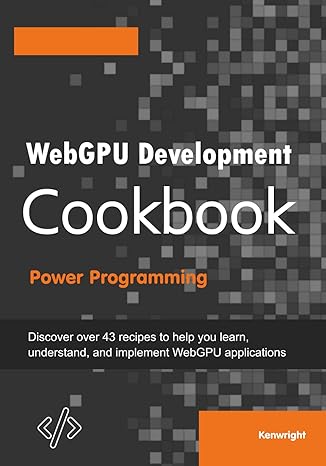
WebGPU Development Cookbook
A thought-provoking exploration of webgpu and its impact on the innovative concepts. This essential read offers fresh perspectives and practical insights that will transform your understanding.

A thought-provoking exploration of webgpu and its impact on the innovative concepts. This essential read offers fresh perspectives and practical insights that will transform your understanding.
What sets this book apart is its ability to connect graphics with real-world scenarios, providing readers with actionable insights they can immediately implement. Through meticulous research and engaging narrative, the author presents complex ideas in an accessible manner, making this book suitable for both beginners and experts in the field. The carefully structured chapters build upon each other, creating a learning journey that is both educational and inspiring. Each section includes practical examples and thought-provoking exercises. Drawing inspiration from the challenges and triumphs within compute, the author crafts a compelling narrative that resonates with readers across diverse backgrounds.

This book challenges conventional thinking and offers a refreshing new framework.
This book is a catalyst for change. I feel more equipped and inspired than ever.
Couldn't agree more. The real-world examples made all the difference for me.
September 27, 2025Totally agree. The pacing and structure made it easy to stay engaged throughout.
October 4, 2025
This book challenges conventional thinking and offers a refreshing new framework.
Absolutely! The author's tone made it feel like a conversation rather than a lecture.
October 10, 2025Stay updated with the latest from the book world
Author and critic Lincoln Michel talks about Hungarian writer László Krasznahorkai's Nobel win and what it shows about who gets recognized in world ...
Read MoreThe Hungarian writer, known for his apocalyptic works, has won the 2025 Nobel Prize in literature. He joins the ranks of Ernest Hemingway, John Steinb...
Read MoreBaldwin: A Love Story, a book by Nicholas Boggs, has a singular focus on the redemptive power of devotion....
Read MoreEnhance your reading and learning experience
Rubber Duck Debugging: explain your code line by line to an inanimate object.
Create a dedicated reading space with good lighting and minimal distractions.
Use the Feynman Technique: teach what you learn to someone else to identify knowledge gaps.
Take brief notes after each chapter. Summarizing helps cement knowledge.
Organize books by color for visual appeal or by genre for practical access.
Write documentation as if the next person reading it is a violent psychopath who knows where you live.
Sarah Johnson
Professional ReviewerThat insight on ai really stuck with me—so relevant to my work.
October 6, 2025